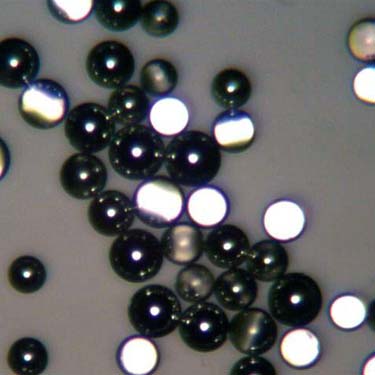mollwollfumble said:
https://www.cospheric.com/P2453_solid_glass_spheres_retroreflective.htm
A paint company that doesn’t wish to remain nameless tried and gave up on using these for a highly reflective paint, because they couldn’t think of a way to orient the retroreflector to shine the reflected light outwards. One approach that almost worked is to use the different surface tension of the glass and aluminium to orient the spheres, but that gives such a slow operation that it can only be used in a very slow drying low viscosity paint formulation, so only on horizontal surfaces.
Brainstorming wanted, to think of a way to get a better highly reflective paint using these, or some other method.
Brainstorming also wanted, for how they managed to get the half-coating in the first place.
“Retroreflective Half-Shell Aluminum Coated Solid Glass Microspheres. Metallized spheres product line consists of solid, barium titanate glass microspheres with a 40 – 50 micron typical mean diameter and a tight particle size distribution. Coating: Half-shell Aluminum.”

wookiemeister said:
alternatively throw the glass beads on the paint whilst its still wet and the beads stick in the paint with the clear face outwards
Start brainstorming, part 2 first.
How the heck do you coat half of microspheres with aluminium without coating the other half?
A few possibilities come to mind.
- Sit the glass beads on a hard surface and fire micron-size aluminium particles at them – sputtering, would produce a non-uniform layer.
- Sit the glass beads on a hard surface. Coat a rubber surface with ink containing aluminium, and press the rubber onto the top of the glass beads, printing the aluminium ink onto the glass beads. Then heat the result to remove the liquid component of the ink.
- Other printing methods such as using a roller or silk-screen printing.
- Fire the glass beads into a soft surface such as styrofoam so that they are half-embedded. Then coat the visible surface using vapour deposition at high temperature in a vacuum.
- Pour the glass beads onto a horizontal plate containing a liquid, chosen to have a high boiling point, low viscosity and surface tension phobic for the beads. Choose a liquid level that just covers the bottom half of the beads. Then high temperature vapour deposit a layer of aluminium on the exposed parts.
- Pour the glass beads gently onto a liquid containing aluminium. Evaporate off the liquid leaving aluminium attached to the bottom half of the spheres.
The second last of the above is probably how they actually do it. The last of the above is the only one that coats the bottom half of the spheres with aluminium. So that’s the only one that has the spheres in the correct orientation to be retroreflectors.
Then if the paint uses glass bead microspheres that do not have retroreflectors on the bottom, on top of a paint containing lots of very finely ground aluminium flakes, then wookiemeister’s method looks like the best way to solve the problem. The paint itself then provides the retroreflector, not the spheres.
